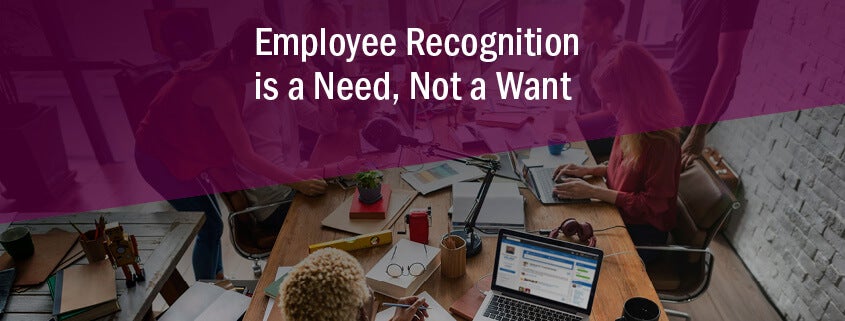Create a culture that means business™
Email address
Do your employees feel recognized? Think carefully, because over 65 percent of employees report they don’t feel recognized at work. And lack of recognition just happens to be the number one reason why employees quit. Employee recognition drives employee engagement, and with higher employee engagement come lower turnover rates and stronger business results. Engaged employees perform 20 percent better and are 87 percent less likely to leave their organizations than their disengaged colleagues. Also, companies with the most engaged employees report revenue growth at a rate 2.5X greater than their competitors with the lowest level of engagement.
So, how do you start building your case for an employee recognition strategy? Start with The Case for Employee Recognition E-Book – an all-in-one guide that highlights everything you need to know about employee recognition. It details where the modern-day workplace is heading, why employee recognition is invaluable for businesses, and ultimately how to secure senior management buy-in. Below are some key takeaways from The Case for Employee Recognition E-Book that every HR professional should be aware of:
The ever-changing workplace
The workplace is constantly evolving and it’s important to be aware of where it’s heading. Organizations are no longer hierarchical and top down, but instead collaborative and bottom up. Baby boomers are retiring faster than young workers can replace them, intensifying the war for top talent and putting the ball in the millennials’ court. By 2018, it’s expected that millennials will make up more than 50% of the workforce.

The Case for Employee Recognition E-Book
Why employee recognition is a need, not a want
It’s simple: employee recognition positively impacts employee engagement and drives business success. According to Gallup 80 percent of employees said recognition is a strong motivator of work performance and 70 percent said they would work harder with continuous recognition. With $8 billion in assets and 260,000 customers, Meridian Credit Union saw a measurable, positive impact after implementing a rewards and recognition program.
“Analyzing the impact of engagement by comparing the top and bottom quartile of engaged employees showed that each highly engaged employee (top quartile) was responsible for over $2 million in growth, while each of the least engaged employee (bottom quartile) were responsible for $1.29 million.” – In regards to Meridian Credit Union, The Case for Employee Recognition E-Book
How to secure senior management buy-in
Hopefully now it’s clear that both your business and employees can benefit from employee recognition. But how can you get senior management on board? Start with the data. Numbers don’t lie and leaders will pay attention when you present them with ROI numbers for engaged workplaces, its impact on financial performance, and how recognition is a key driver of both. All this valuable data and more is presented in our new eBook: The Case for Employee Recognition.
Learn how employee recognition promotes engagement, creates an infectious work culture that retains top talent, and improves overall customer satisfaction by downloading The Case for Employee Recognition E-Book.



